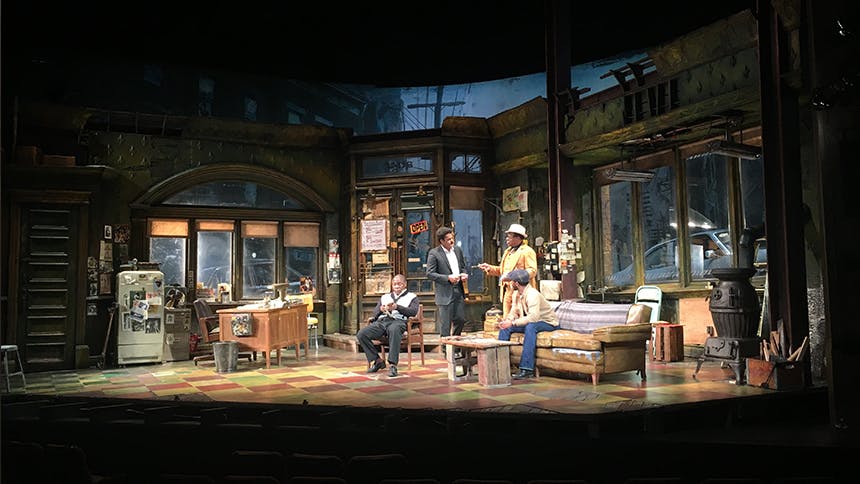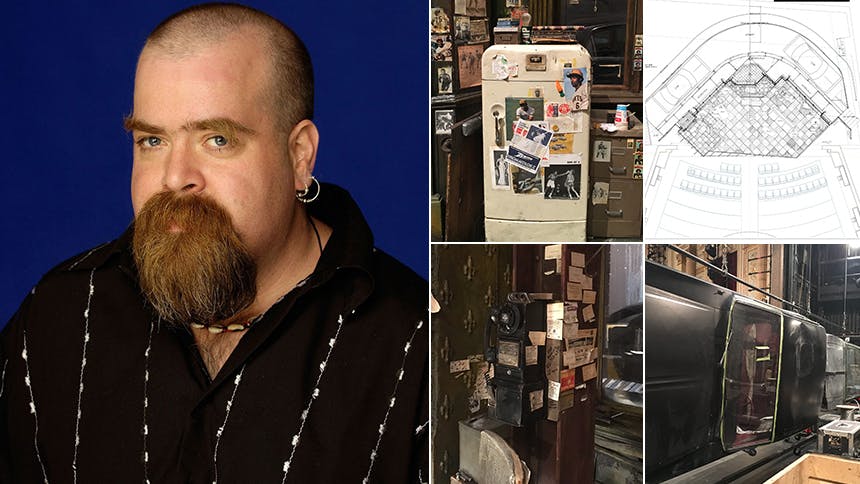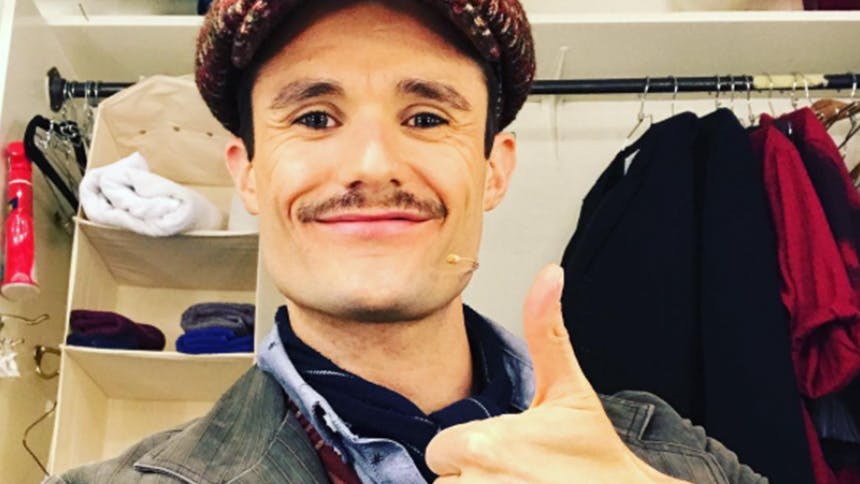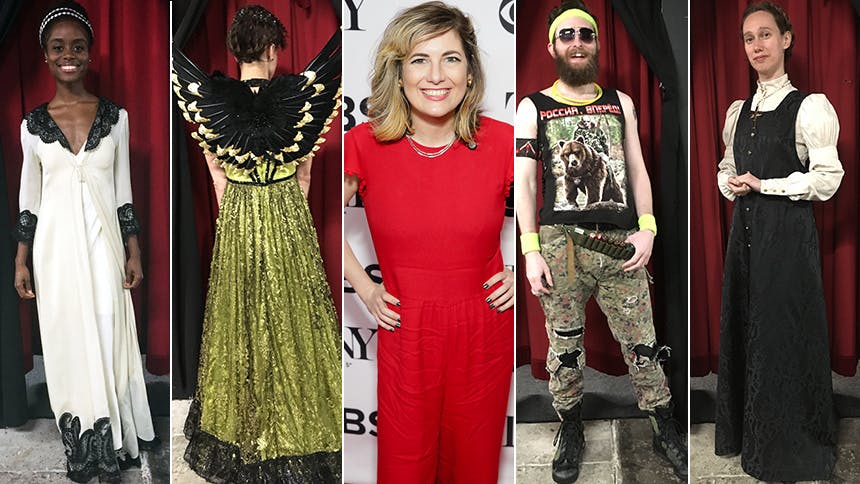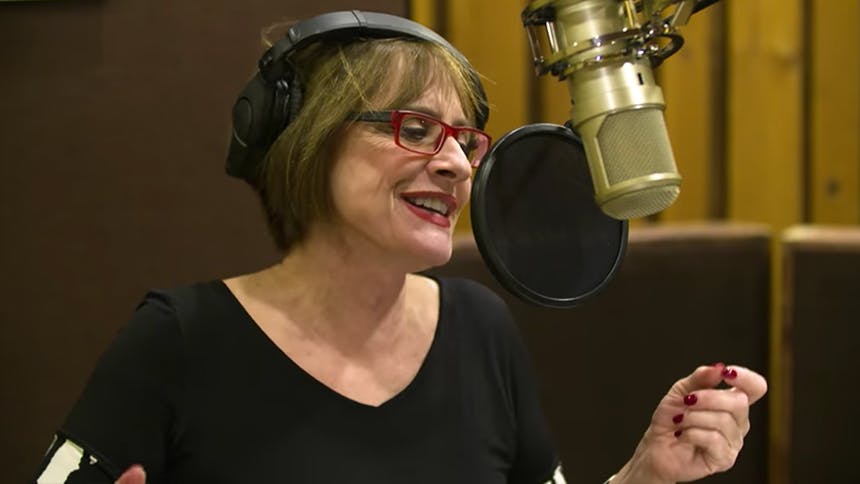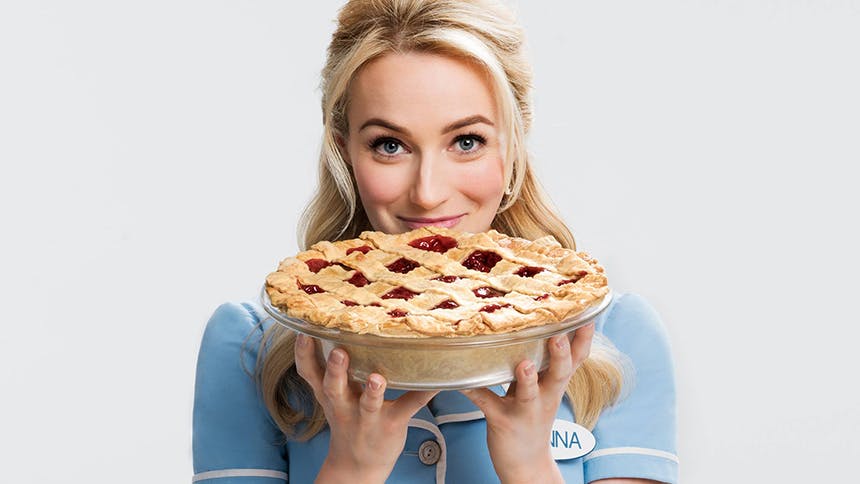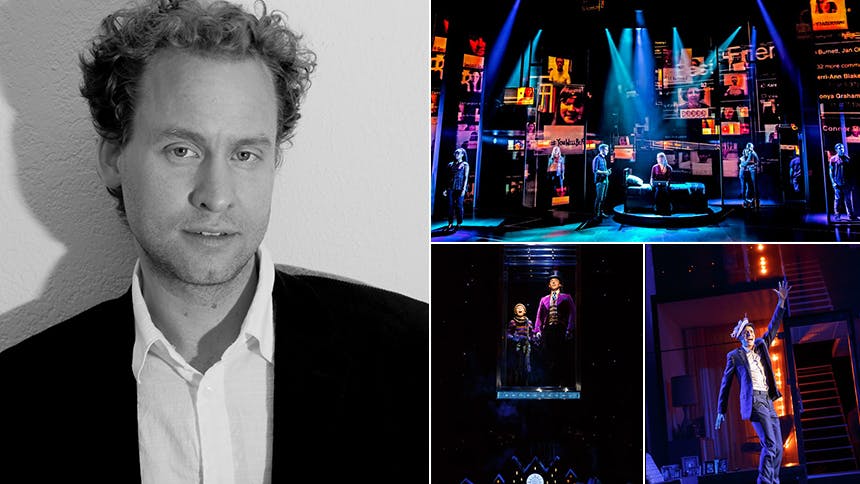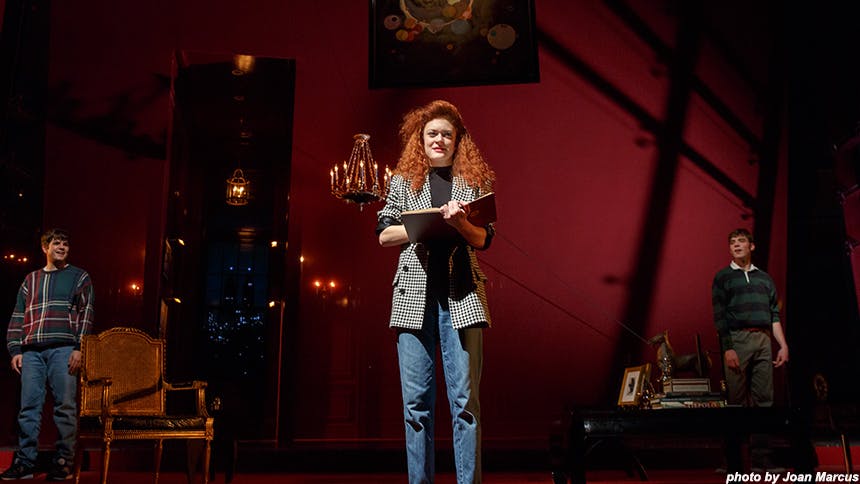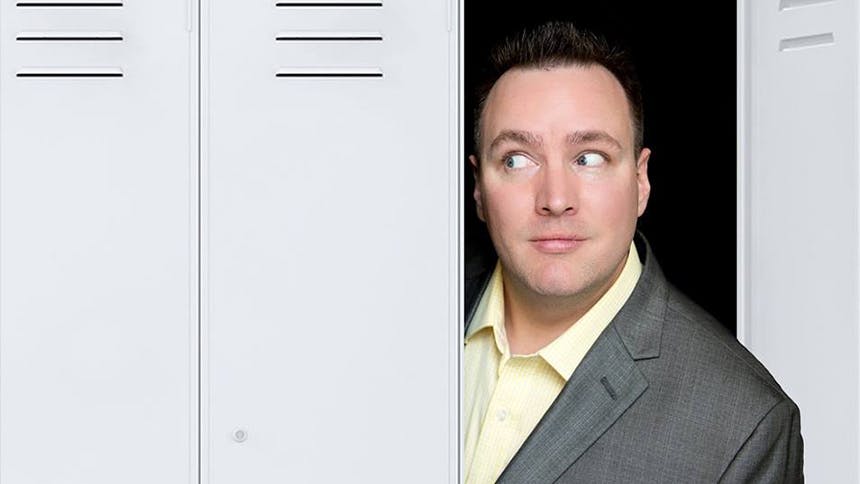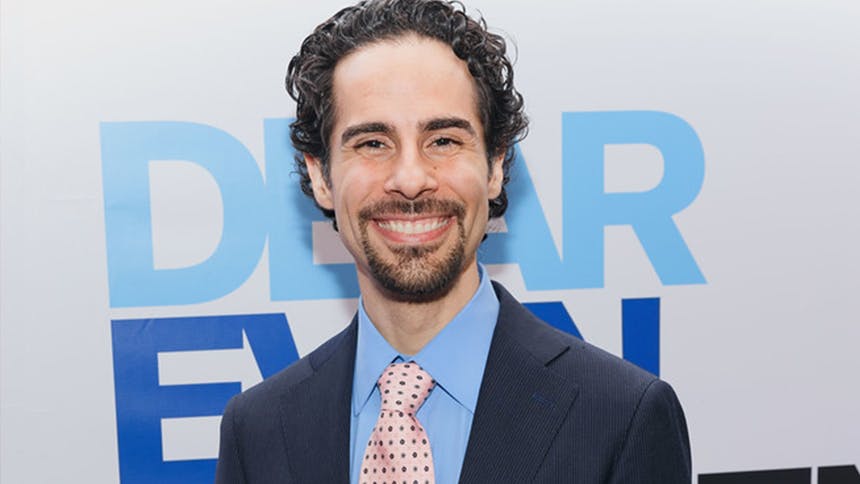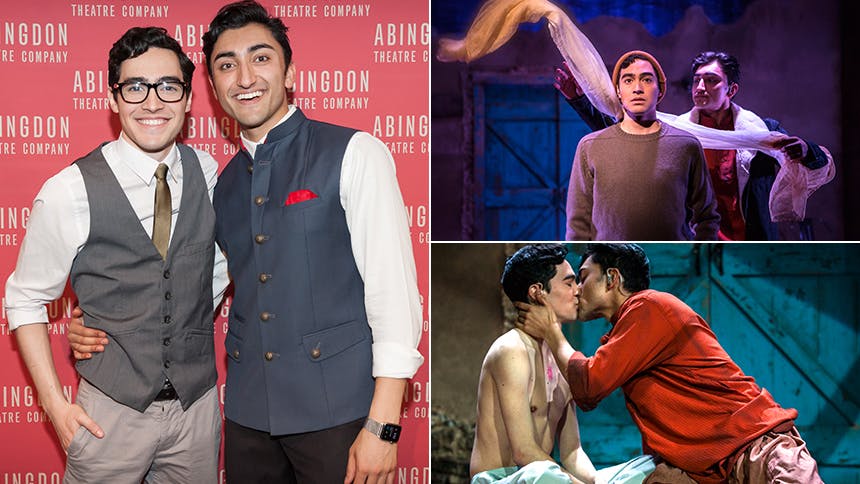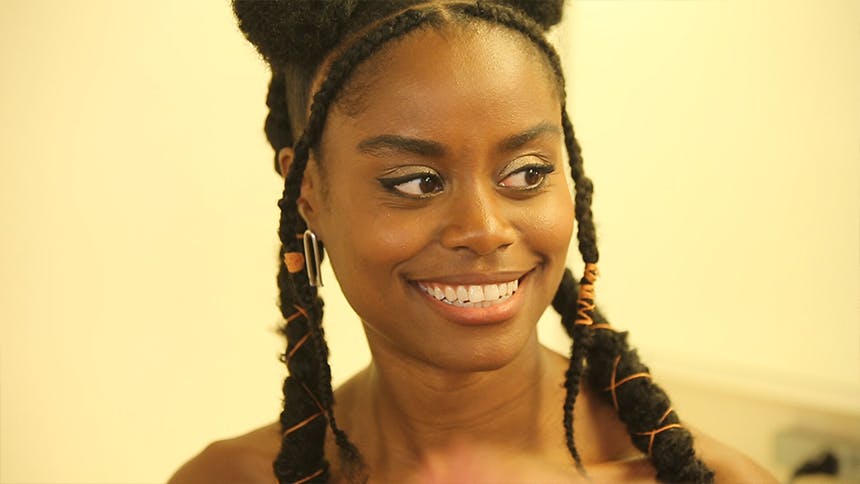Tony and Emmy Award-winning set designer David Gallo has more than 30 Broadway shows under his belt, including First Date, Stick Fly, The Mountaintop, Memphis, Xanadu, Company, Thoroughly Modern Millie and The Drowsy Chaperone (2006 Tony Award). He's worked on Sesame Street and with the Blue Man Group, and he has the distinction of working with August Wilson from 1996 until Wilson’s death. David designed the premiere productions of Wilson’s later works King Hedley II, Gem of the Ocean, Radio Golf, and the off-Broadway and Broadway productions of Jitney—for which is nominated for a 2017 Tony Award.
Scroll on as David Gallo shares with BroadwayBox 12 secrets about his Tony-nominated set for MTC's Broadway production of Jitney.
I think one of the most interesting things that people seem to care about is the cars. It was very important to me (and to August when we first talked about the show back in the late ‘90s) that we see as he described it “a piece of a car”. I took that to a little bit more of an extreme to seeing the actual machines these men used to transport the neighborhood. Then it turns into: how are we going to find these cars? And how are we going to get them into the theatre? In ’97, it was a lot easier to find abandoned American automobiles but by now most have been recycled, so it was very, very difficult to find those cars. More importantly, it was super tricky getting them into that theatre. Each of those automobiles had to be reverse engineered in to fit down a single corridor—the Friedman doesn’t have a big loading door, so everything had to go down a hallway sideways. It was pretty crazy actually but it turned out really, really well. The cars are a big part of what that world is so we were willing to go through a lot to make it happen. We had a great car guy in New Jersey, who I work with a lot. We invented an entire system just to get it in there.

I view the set as a gigantic living collage largely influenced by Romare Bearden collages. Romare would take photographs of big, ole ‘70s automobiles and paste them right into his paintings. So we pasted these automobiles right into the middle of our painting.
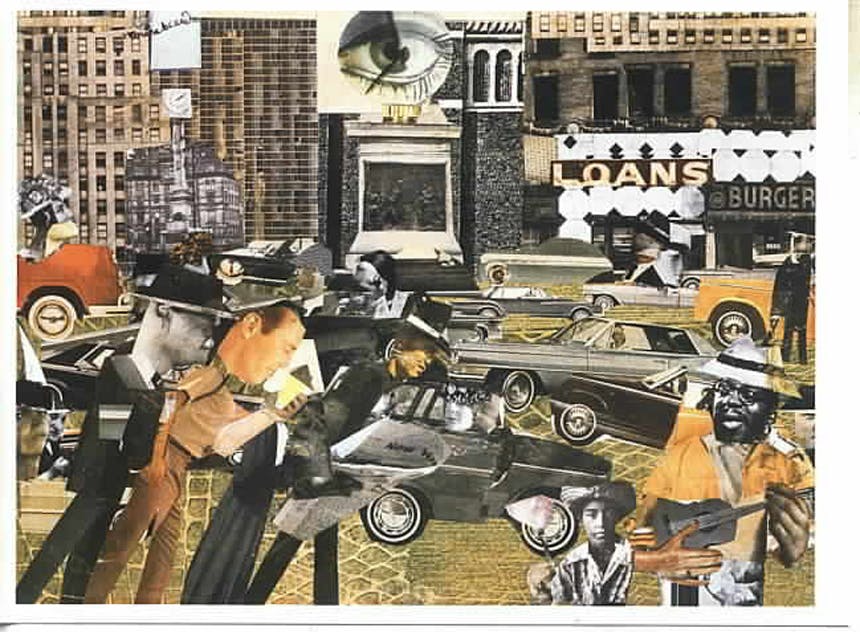
August always talked about Romare Bearden being a sort of visual inspiration for the Hill District in the cycle. It was one of the “four B’s”, so Bearden is an important origin when you are working on these plays, I find. What is interesting about this particular production is the sense of collage in the odd proportions of the set—which I don’t know if everyone necessarily notices because it all works as a whole. If you really look, the architecture, the ornamental detail, the proportions, and the construction are all very chopped up into pieces and then resembled in a coarse manner very similar to the way Romare Bearden captured the African American life at that time.

The jitney station itself has an incredible history. Whenever you’re working in a setting for a Wilson play, the history of that environment is almost always crucial. It goes back a very, very long way, and the history of this jitney station is there. You have evidence that it was a beauty salon, a men’s barber shop, and a butcher shop at one time. If you look at the stage right side of that set, there’s this bizarre section where the tile becomes completely different scale. There’s indication that there must have been a wall there that was ripped out and the tile was filled in poorly with a different tile. There is metal grating in the floor where there would have been a meat locker 30 years earlier. The floor also has evidence of barber chairs being ripped out.
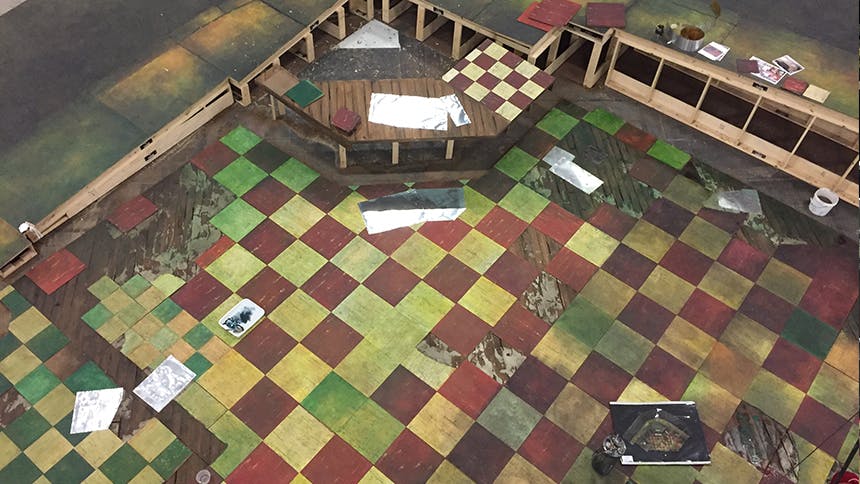
If you look at the window on the stage left side there are old paintings from when it was a men’s barber shop. There are red white and blue motif that’s faded on the glass, and next to it are old displays from when it was more of a store that were never removed. The front door doesn’t say jitney station anywhere, it actually says hair dresser. It all goes into the collage of the setting. There’s a lot of history there.

The image on the transom is an actual jitney station address. I’m very careful about my locations for August Wilson plays because some of them have very specific addresses, like Aunt Ester’s house. That cat and mouse game we play with the ultimate American poet, trying to pin down certain things into “realism”. We put a particular jitney station’s address there and one that if you were a Pittsburgh resident and you saw that address you might identify it with an actual jitney station.

If you look at the stage, the level of age on everything is pretty extreme. Things have been taped to the walls over the years and then more things get taped to the walls—a sporting event or a picture people like. There’s six different levels of tape yellowing on that stage—shiny tape to dull tape—and four or five different kinds of markers. I kid you not. We had different levels of tape representing the different times all the little flyers and cards and photos would have been put up. The levels of age are pretty carefully thought through. The newest thing on the stage—the only thing that’s bright white—is the calendar because it’s the only thing that would have been there for one month.
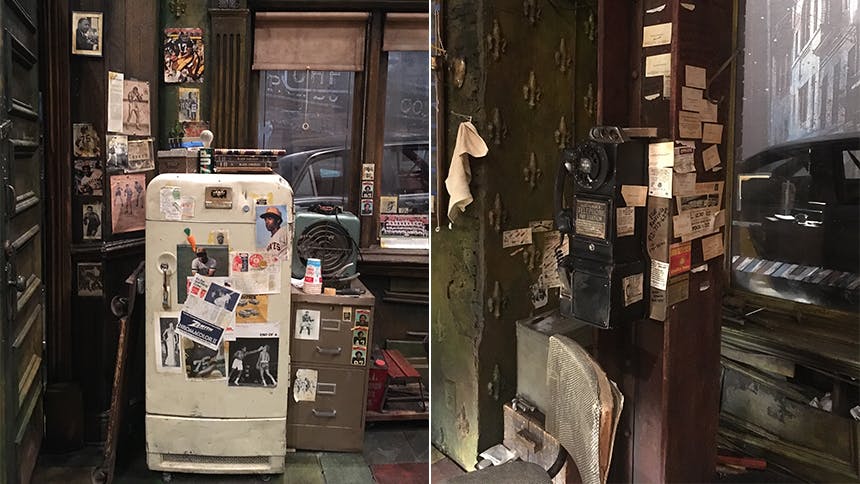
One other cool thing about the process is doing a show this heavy twice, and having the opportunity to work directly with the playwright on it the first time. The initial design back in ’97 was a very different set. It was my first show working directly with August Wilson on what was essentially a new play. We were approaching it like it would become the definitive production in some way. From the initial model, August was worried about a few things. One was the level of abstraction. It was very important to him that the Hill District be represented correctly, and I ended up changing the names of most of the businesses on the backdrops to real Hill District places. This is the version August would be the happiest with even though it’s an abstraction of the area, it’s the closest to true vibe and tone and detail.
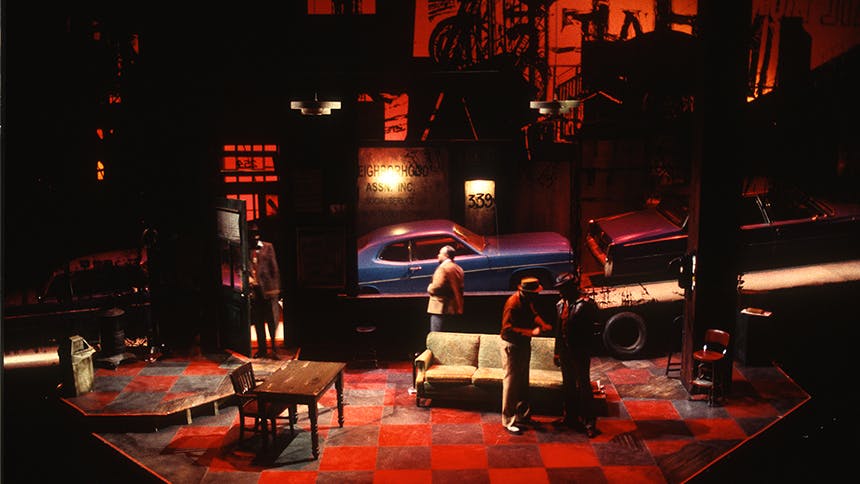
The backdrop literally has photos August took in it. The backdrop is an actual collage. I stood at my drawing table with paper and scissors and glued all that stuff down and painted on top with a savage intensity. It’s also a combination of all sorts of Pittsburgh photographers and pictures I’ve taken over the years, so there’s a lot of love in that drop. The backdrop is very much looking down the hill to where the stadium was built. They built this enormous stadium [Civic Arena] that separated the Hill District from the rest of Pittsburgh as a wall between two different worlds and that bugged the shit out of August. He spent a lot of time talking and writing about that. So, I tried to give the indication in the drop that, though you can’t see it, that big ole stadium is walling them off.

What was interesting to concentrate on in this production was finding the exact right tone on the set between urban blight and dilapidation and reminding ourselves that this is an environment that highly skilled men have inhabited for almost two decades. If you look very carefully, you’ll see an environment that has fallen deeply into decay but has been maintained brilliantly by the people in there. Example, on the stage left side there’s a whole electrical nightmare (wires and conduit boxes). One of our characters, Doub, that worked on the railroad, Ruben Santiago-Hudson (our director) imagined he was an electrician, so all of those wires are very carefully capped off so nobody hurts themselves. Same with all the pipes. They are leaky and broken but at the very top of the show, you can see over on the stage left side there’s a ladder and a pipe wrench. Turnbo comes in and he looks at it and looks up and sees they had just been repaired. There’s a lot of up to date maintenance on a space that’s in decay. Finding that tone is what Ruben and I spent the bulk of our time on in the venue, and the end result I think is wonderful.
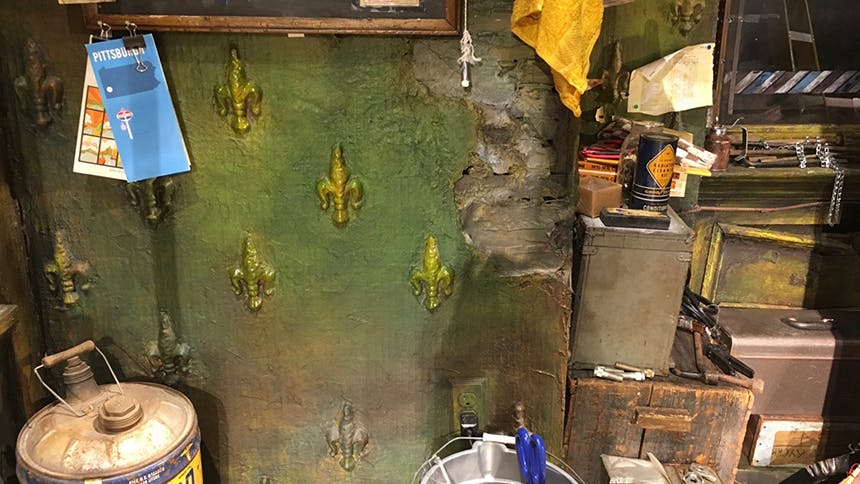
Upstage left side we turned into a little auto repair spot for Youngblood. The level of detail that’s over there includes little scraps of paper and letters from the bank, trying to buy his house and appraisal stuff. All that stuff is up there. His whole young, beautiful potential life is right there in that corner.

Let’s talk about that monster of sofa. Here’s the thing for me as a designer: really this play is about a telephone, a sofa, and a door. You need a phone, a place to sit around, and a place to come and go from. Finding the right sofa for this production was murder; what happens is you find a sofa you love but the wrong sofa goes into rehearsal, and you get nervous. They get used to the rehearsal sofa. We had this beast of a sofa in rehearsal and I was terrified that we were going to end up having to use it for the production. What’s important about this sofa was that you could sit on the arms, and that was important to Ruben [Santiago-Hudson]—they are constantly in motion and in rest. So, I had another sofa I absolutely loved but we couldn’t make it work sitting on the arms, so this thing was the rehearsal piece. It was bright red and horrible—I just hated it. Scott Laule the prop guy, said, “Dude, I’m going to paint it and you’re gonna love it.” I said, “You’re out of your mind.” But now that thing is perfect. It went from the bane of my existence to the most lovely thing on the stage.
